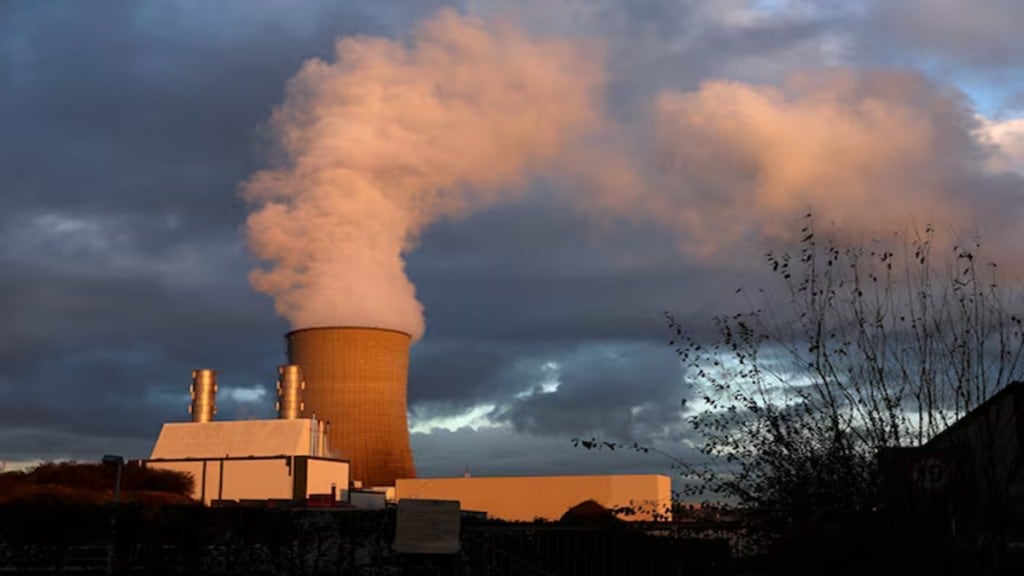By Somit Dasgupta
One of the decisions taken in the 16th Conference of the Parties (COP) was the preparation of a biennial update report (BUR), which was to be submitted every two years. In compliance to this, India submitted its fourth BUR (BUR 4) in December 2024, after the first three submissions in January 2016, December 2018, and February 2021. In addition to this, India has submitted three national communication (NC) reports (as mandated by the United Nations Framework Convention on Climate Change in 1992) in June 2004, April 2012, and December 2023. Both these reports — BUR and NC — are expected to provide an inventory of greenhouse gas (GHG) emissions for the country in question along with the mitigation and adaptation measures initiated. The difference is that the NC is a comprehensive report that is submitted every four years whereas the BUR is a shorter, more frequent update of the progress, to be submitted every two years. An analogy which comes to one’s mind is the difference between the erstwhile Five-Year plans and the annual plans which put into action the targets visualised in the Five-Year plans.
BUR 4 contains data for 2020 and the total GHG emissions have been estimated at 2.9 billion tonnes of carbon dioxide equivalent. GHG consist primarily of CO2, methane, and nitrous oxide, and the total GHG content prevalent in the atmosphere is arrived at not by adding up the individual units but by adding up the warming potential of each gas. That is why GHG is measured in terms of CO2 equivalent, where the warming potential of CO2 is taken as the numéraire. To give an example, if the warming potential of CO2 is taken as 1, the corresponding figures for methane and nitrous oxide are 21 and 310 respectively over a 100-year period. As far as India is concerned, CO2 accounts for 80% of its GHG whereas methane and nitrous oxide account for 13% and 5% respectively.
According to Our World in Data (a non-governmental organisation based in the UK), India’s CO2 emissions have grown from 1.68 billion tonnes (BT) in 2010 to 2.42 BT in 2020. This translates to a compound annual growth rate (CAGR) of about 3.7%. The CAGR for 2000-2010 was relatively higher at 5.4%, as carbon emissions went up from 0.99 BT to 1.68 BT. In contrast, the global CAGR for carbon emissions for 2000-2010 and 2010-2020 were 2.7% and 0.5% respectively.
Net Zero Tracker (an open-source independent organisation collating data on climate), has enumerated that 145 countries covering 76% of global emissions, 78% of the world’s gross domestic product, and 84% of the population have declared to go net-zero. This declaration could be through a policy document, a pledge, or even by enacting laws. Incidentally, 53 countries are absolutely silent on the issue. To go net-zero by 2050, carbon emissions have to be reduced by half by 2030. We are nowhere near this goal. Carbon emissions did come down during the pandemic but have gone up again. An element of despondency has crept in among the developing nations, and one of the main reasons is the reluctance of the developed world to provide grants/concessional aid to tackle climate change. This was repeated at COP29 where only $300 billion was agreed to when the actual requirement is in trillions, perhaps $6 trillion. The move by the US to exit the Paris treaty was the final nail in the coffin. If the world’s largest cumulative polluter can simply walk away, it will have some demonstration effect. One can clearly see a rethink on the part of some countries, including India, of what they plan to do to battle climate change. The latest Economic Survey (2024-25) acknowledges that low carbon growth has significant trade-offs and that India’s goal is to become a developed country by 2047. A veiled reference seems to be that if required, fossil fuels will be tapped to achieve developed country status. There are other telltale signs too. India has missed the deadline (December 31, 2024) to submit its Biennial Transparency Report and has also missed the deadline (February 10) for submitting its revised nationally determined contributions (NDCs). Only 13 countries have submitted their updated NDCs till now, giving targets for 2035.
What is India’s status on decarbonisation? The energy sector accounts for 91% of the CO2 emitted primarily by burning fossil fuels used for power generation, industries, and road transport. We seem to have some plan for decarbonisation only for the power and road transport sectors, and that too is faltering. India’s addition to renewable generation is much less than what is required keeping in mind the growth in demand. Consequently, we are trying to maximise our coal-based generation by importing more coal and delaying the retirement of old coal-generating stations. Battery storage is still expensive, and in any case, India is fully dependent on importing critical minerals to manufacture batteries. Regarding road transport, the growth of electric cars is waning due to inadequate charging stations, high upfront cost, low mileage per charge, etc. As far as the industrial sector is concerned, the remedy probably lies in green hydrogen which, frankly speaking, is a mirage today. Green hydrogen is difficult to produce and store, and difficult to transport, apart from a host of other problems. Experts say green hydrogen will not be competitive vis-à-vis fossil fuel-based hydrogen in the near future. Moreover, carbon capture and storage are uneconomical and will remove a very small portion of the carbon generated. All these issues are merely scratching the surface of what otherwise is a huge problem.
Readers can draw their own conclusion whether net-zero by 2070 is a possibility for India. The only solace is that globally, the situation is much the same. The fact is that climate change is nobody’s baby.
The writer is senior visiting fellow, ICRIER.
Disclaimer: Views expressed are personal and do not reflect the official position or policy of FinancialExpress.com. Reproducing this content without permission is prohibited.

